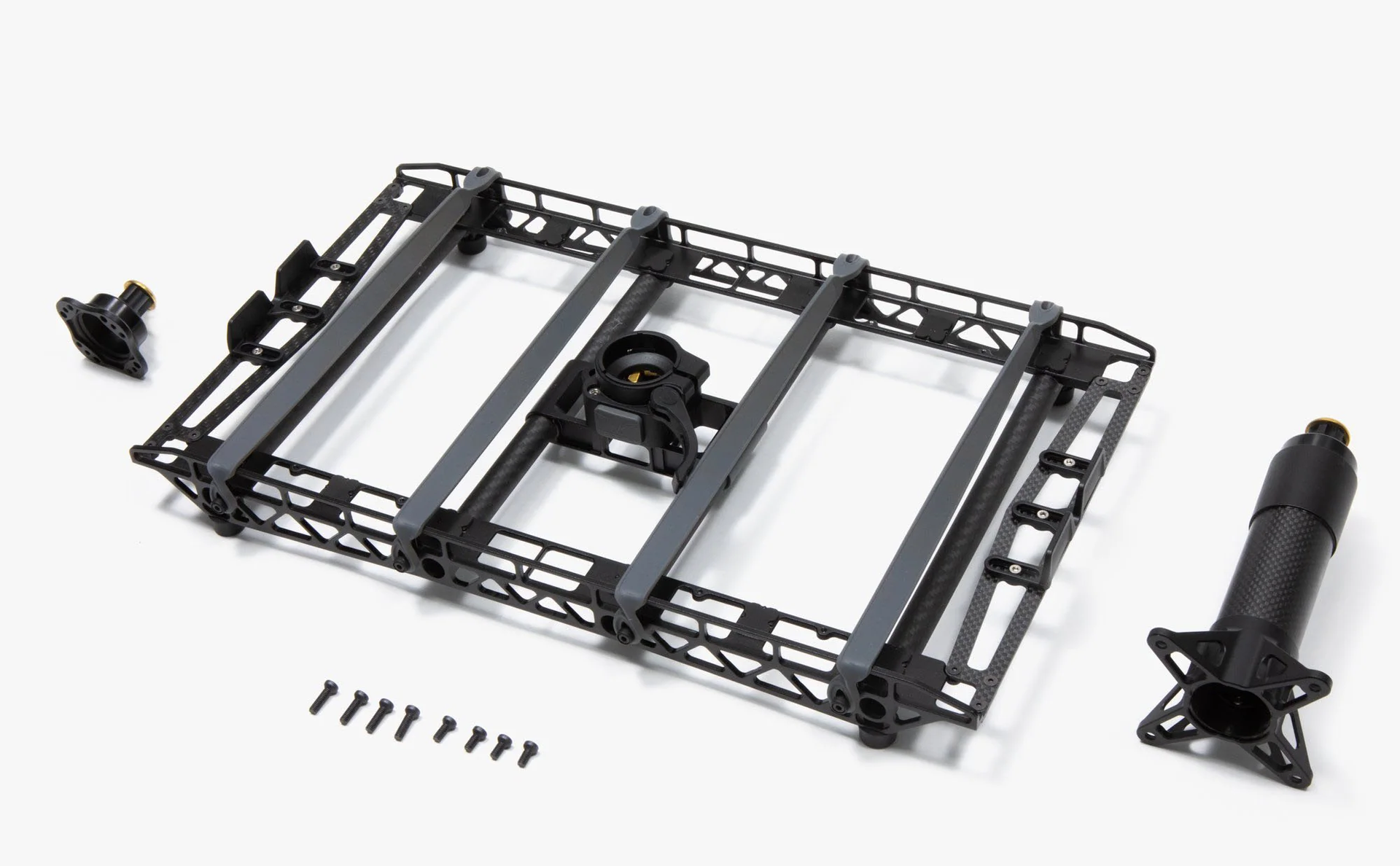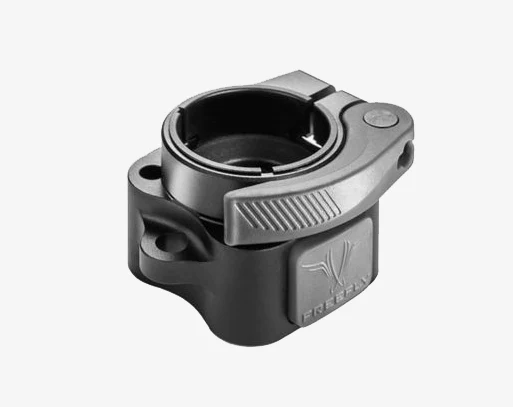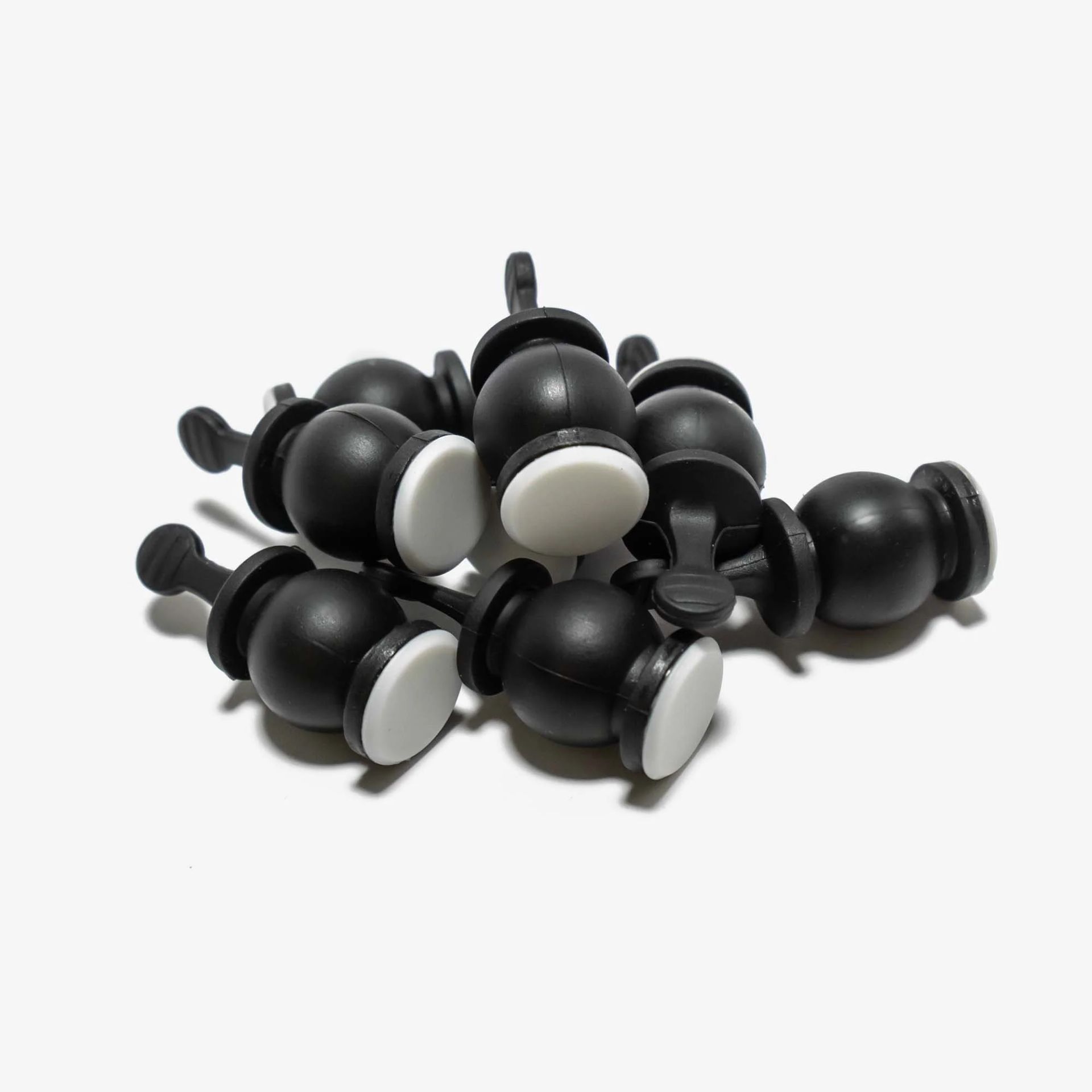SMALL PROJECTS
Not all projects need to be big! Small projects are sometimes more fun due to the team size and resulting level of responsibility and autonomy.
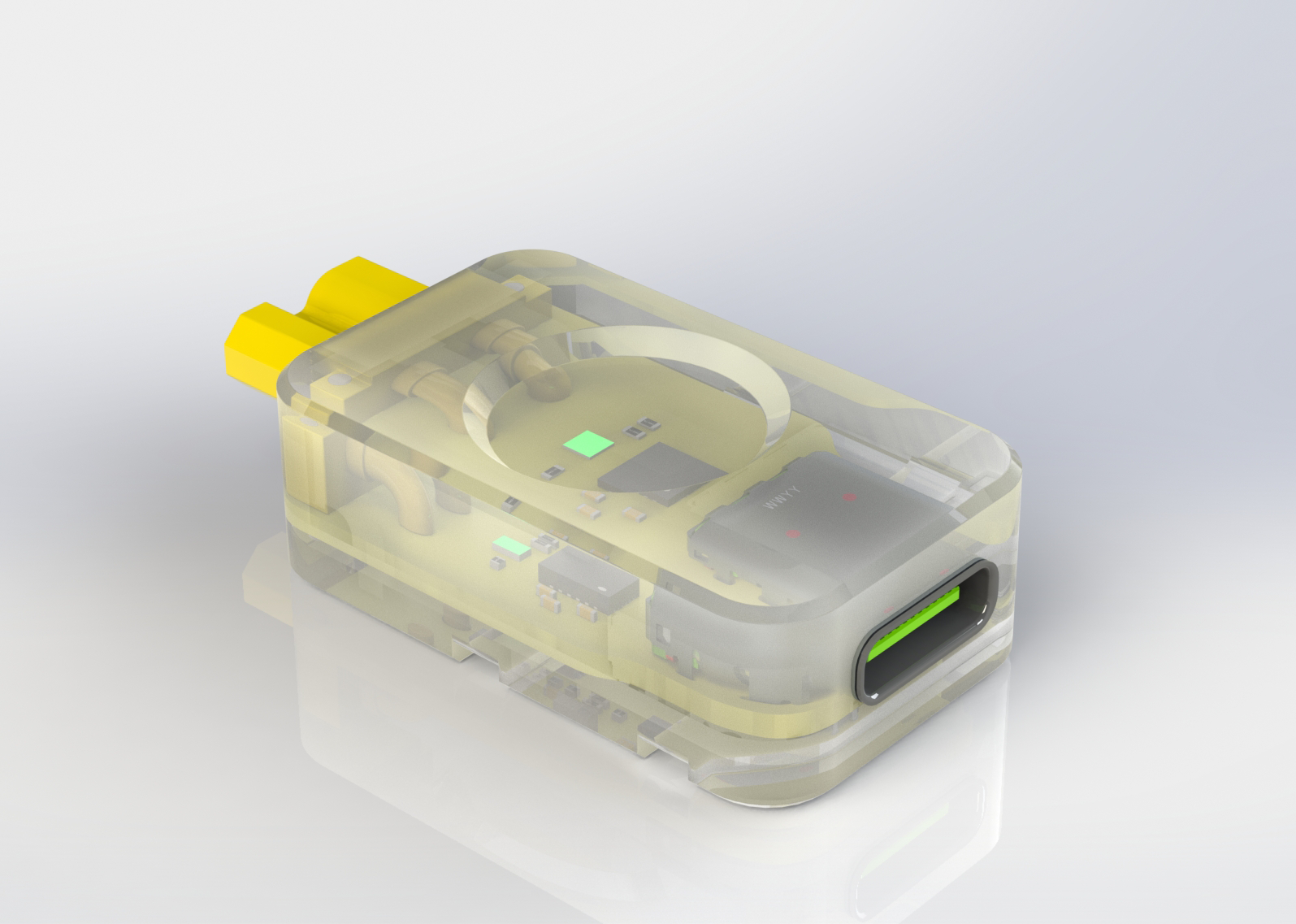
CrackerJack
Crackerjack is a small voltage converter which turns USB C charger power into a variety of usable voltages. Other than the mag mount system I designed for the RTK GPS Module this is one of the designs I am most proud of from my time at Freefly. It came about as a side project for the Ember Camera which does not have an internal power source and needed a way to connect to the 100W GaN chargers readily available to Ember's users. While the mechanical design for this project is relatively simple I wanted to make sure the circuit board was accentuated as the star of this product. To do that I chose to use a crystal clear overmold with some simple chamfered features that add a few subtle details to make the design more visually interesting. Overmolding a PCBA with a hard clear material proved to be difficult, especially since the XT30 connector was made from a polyamide who's melting temperature would limit the materials and molding methods. In the end I was able to identify a PVC material which had molding properties required to use conventional injection molding. There were further issues that required some tweaks to the mold parameters since the clear material would not cover up cosmetic issues such as the inclusion of small air bubbles in the overmold. Once all of these problems were sorted out the resulting product came out great. It also did something that I haven't seen anyone else successfully do: a crystal clear hard overmold of a PCBA.
FRX Pro
FRX Pro is a 900MHz long range radio developed to address the challenge of maintaining a stable data/control link between a gimbal operator and the gimbal in the demanding radiofrequency environments of film sets.
This was the first project I led at Freefly, working together with a fellow junior electrical engineer who designed the radio PCBA and created the firmware needed to run the radio module. I led its development, testing, and eventual production, in addition to creating its two-part machined enclosure and the UX design. Beyond its original purpose, FRX Pro integrates into various products as a versatile data link, such as providing the Alta X with a dependable datalink for a range exceeding 10 miles under favorable conditions. As part of this project I built out a lightweight version of Freefly Systems' product development process to help guide small teams toward successful launch projects without being weighed down by the full process. This process has been in use at Freefly since I developed it and has helped launch almost all accessories that came after FRX Pro.
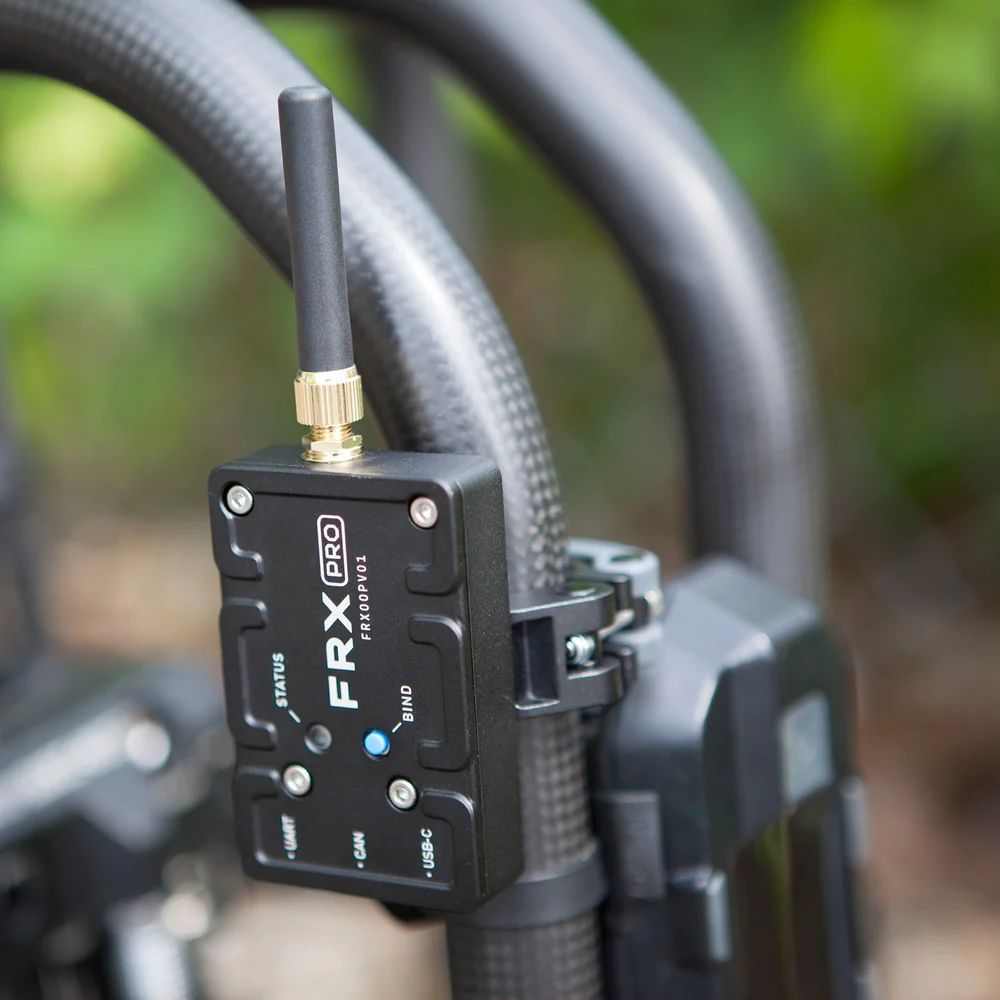
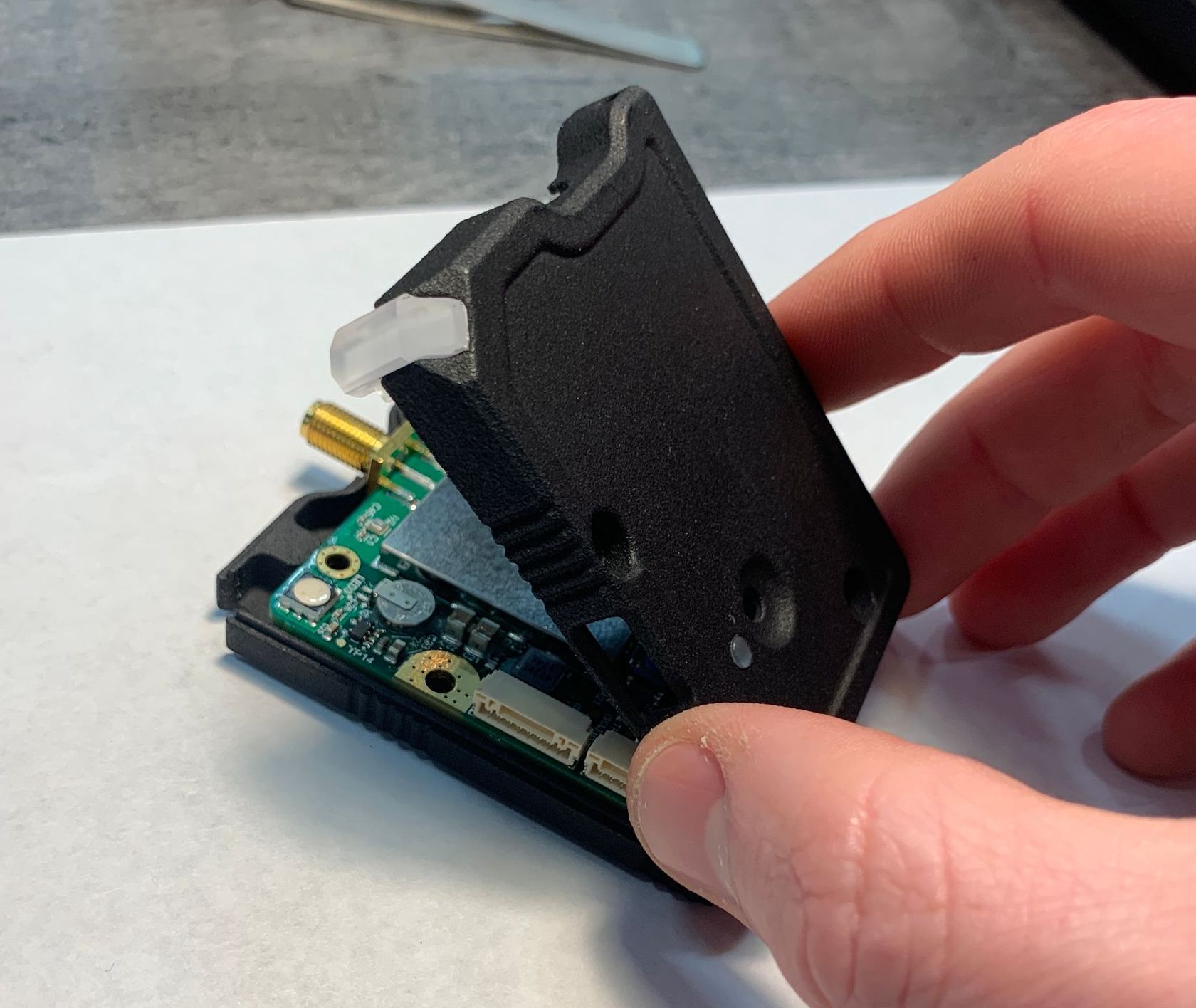
RTK GPS Module + Mag Mount
The Freefly Real-Time Kinematic (RTK) GPS is a system that uses the GPS information from a static base station to correct for errors in measurements taken by the GPS attached to the UAV. This allows for greater accuracy when using an Alta X or Astro to map an area of land and increases UAV safety when required to fly in environments with limited space.
In this project, I owned all mechanical engineering tasks, led the setup of the device production, and managed part quoting and supply chain. Some key design elements included in this design are:
- The Mag Mounting system which allows for quick setup and teardown. This system employs magnets and interfacing surfaces to establish a self-centering joint with 90 degrees of rotational symmetry. This is one of the designs I am most proud of due to its simplicity, ease of use, and satisfying feel.
- A set of injection molded enclosures which trap the corner LED without additional fasteners and draws stylistic inspiration from Freefly's original GPS module. These are also notable as my first chance to design injection molded parts.
- The multi faceted light pipe which allows a user to clearly see the status LED from the front, back, and above.
Part of my effort in managing the Bill of Materials, was to consistently optimize for costs. This ultimately led to the first use of an MFJ part in a Freefly product as I was able to highlight the MJF process' advantages in part cost, design flexibility, and supply chain resilience since parts could be sourced from local vendors or made in-house.
ARC 200
The ARC 200 is a sinusoidal electronic speed control, made to power anything from e-bikes to battlebots. I was brought onto this project to handle the final design tasks and make sure that its launch was successful.
While the majority of my work on this project would come in the form of managing ARC 200's release to production and ensuring that all of the launches supporting tasks were completed, I still managed to solve a few design challenges during the project:
- The ARCs signal connectors required custom connector overmolds. These proved to be particularly tricky to design because the JST JWPF connectors used in the product were not made to be overmolded. In the end, I was able to create an overmold with sufficient retention by making a small modification to the connector and using a two stage molding technique.
- In an attempt to improve the sustainability of our packaging, I decided to make a foldable paperboard insert which held the ARC in place and constrained its connectors and accessories. Swapping the XPLE foam for the paperboard insert resulted in a cheaper and fully recyclable packaging solution that did not sacrifice protection or product perception.
- The ingress protection rating for ARC 200 was increased to IP67 near the end of development to accommodate some very extreme use cases such as hydrofoils and electric skateboards. In order to meet this requirement I updated the design of the cable strain reliefs and electronics enclosure to include a tortuous path and clearance for a sealing bead of RTV silicone.
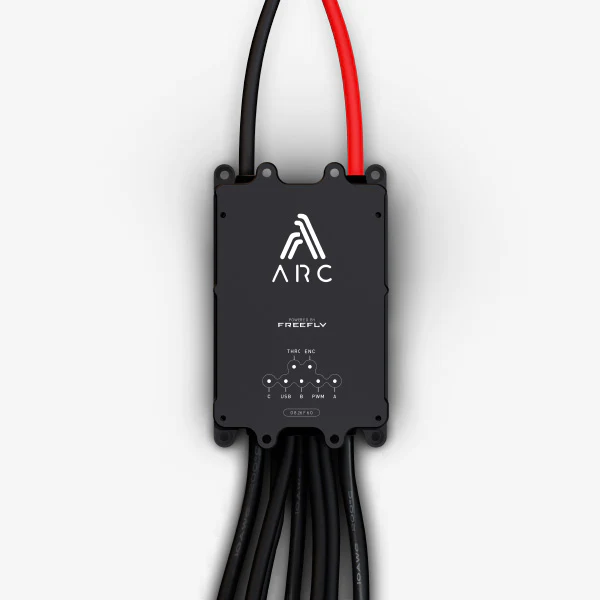
OTHER PROJECTS
MOVI PRO COUNTER WEIGHTS
A camera rail and counterweight system allowing for larger and heavier lenses on MoVI Pro
SKYVIEW LANDING GEAR
Alta X's Skyview battery tray and landing gear.
TOAD IN THE HOLE (M4)
An updated version of the OG TITH - just with M4 fasterners for increased strength.
ASTRO DAMPER
A molded damper which is filled with an semi-fluid compound for payload vibration isolation. Molded out of three different durometers allows custom damping for a variety of payload weights.
MoVI PRO TB50 ADAPTERS
A battery adapter which allows MoVI Pro to use additional power solutions.
ASTRO CASE
A case designed to store and protect Astro along with its accessories during transportation. Featuring a removable battery caddy and modular payload storage underneath the Astro.



